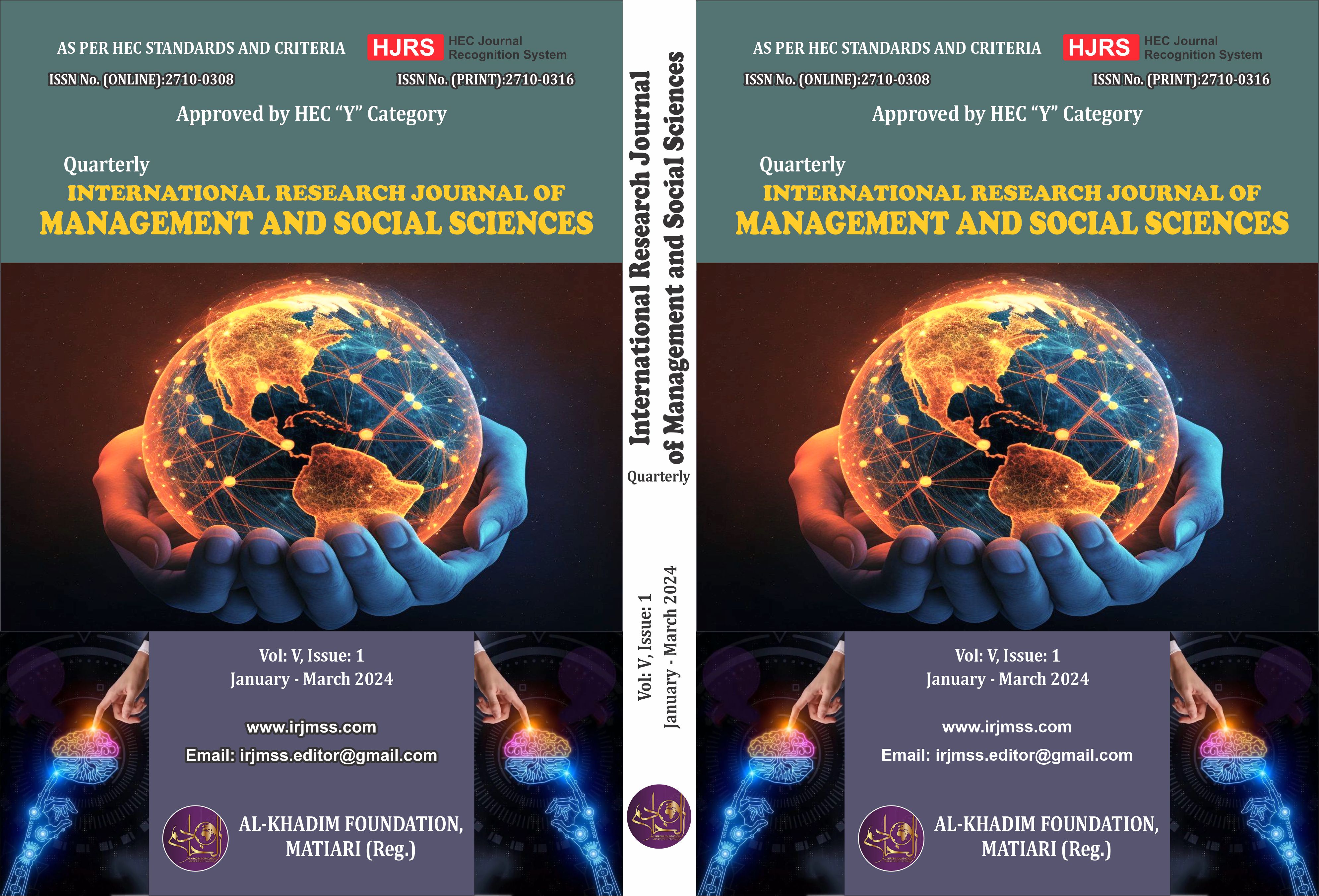Academic Performance of Students with and without Stem Education
Keywords:
STEM education, Academic performance, critical thinking skills, Problem solving skillsAbstract
This research work was designed to know academic performance of students with and without STEM education. It was a quasi-experimental research and non-equivalent control group design was used. Self-developed achievement test in the subject of General Science were used as research tool. Grade eight textbook was used as the instrument of the study. The sample was selected using a simple random sampling technique. Two sample classes and their students were randomly selected from public sector girls’ schools of District Jhang. Selected classes were randomly assigned as control group and experimental group. Academic achievement of students was checked before the treatment using pretest and after the treatment using posttest. Collected data was analyzed using statistical techniques (i.e., Mean, SD and t-test) using Statistical Package for Social Sciences. The objectives of the study were; (a) to find out academic performance of students in grade 8. (b) to find out effectiveness of STEM education in improving academic performance of students of grade 8. It was concluded that the academic performance of students was almost same before the treatment while, after the treatment, the academic performance of students of experimental group was higher than the academic performance of control group. It was found that equal ability students when taught through STEM education performed better after the treatment. Hence STEM education method proved as better alternative as compared to the traditional method for teaching science.
References
Aslam, S., Saleem, A., Kennedy, T. J., Kumar, T., Parveen, K., Akram, H., & Zhang, B. (2022). Identifying the Research and Trends in STEM Education in Pakistan: A Systematic Literature Review. SAGE Open, 12(3), 21582440221118545. https://doi.org/10.1177/21582440221118545.
Costa, M. C., Domingos, A. M. D., Teodoro, V. D., & Vinhas, É. M. R. G. (2022). Teacher professional development in STEM education: An integrated approach with real-world scenarios in Portugal. Mathematics, 10(21), 3944. https://doi.org/10.3390/math10213944
Fraenkel, L., Peters, E., Charpentier, P., Olsen, B., Errante, L., Schoen, R. T., & Reyna, V. (2012). Decision tool to improve the quality of care in rheumatoid arthritis. Arthritis care & research, 64(7), 977-985. doi: 10.1002/acr.21657.
Gay, R. K., & Castano, E. (2010). My body or my mind: The impact of state and trait objectification on women's cognitive resources. European Journal of Social Psychology, 40(5), 695-703. https://doi.org/10.1002/ejsp.731
HACIOĞLU, Y., & GÜLHAN, F. (2021). The effects of STEM education on the students’ critical thinking skills and STEM perceptions. Journal of Education in Science Environment and health, 7(2), 139-155. https://doi.org/10.21891/jeseh.771331
Hali, A. U., Aslam, S., Zhang, B., & Saleem, A. (2021). An overview on STEM education in Pakistan: Situation and challenges. International Transaction Journal of Engineering, Management, & Applied Sciences & Technologies, 12(1), 1-9. http://doi.org/10.14456/ITJEMAST.2021.20
Hasanah, U. (2020). The Impacts of STEM Instruction on Strengthening High School Students’ Reasoning Skills. Science Education International, 31(3), 273-282. https://doi.org/10.33828/sei.v31.i3.6
Tunc, C., & Bagceci, B. (2021). Teachers' Views of the Implementation of STEM Approach in Secondary Schools and the Effects on Students. Pedagogical Research, 6(1). https://doi.org/10.29333/pr/9295
Vallerand, R. J. (2007). A hierarchical model of intrinsic and extrinsic motivation for sport and physical activity. In M. S. Hagger & N. L. D. Chatzisarantis (Eds.), Intrinsic motivation and self-determination in exercise and sport (pp. Human Kinetics. https://doi.org/10.5040/9781718206632.ch-017
Widya, W., Indrawati, E. S., Muliani, D. E., & Ridhatullah, M. (2019). Design of Integrated Science Learning Materials Based on Creative Problem Solving Model Integrated with Anti-Corruption Characters. Kasuari Physics Education Journal (KPEJ), 2(2), 62-69. https://doi.org/10.37891/kpej.v2.103
Yunus, M. M. (2018). Innovation in education and language learning in 21st century. Journal of Sustainable Development Education and Research, 2(1), 33-34. https://doi.org/10.17509/jsder.v2i1.12355
Zhao, J., Wijaya, T. T., Mailizar, M., & Habibi, A. (2022). Factors influencing student satisfaction toward STEM education: Exploratory study using structural equation modeling. Applied Sciences, 12(19), 9717. https://doi.org/10.3390/app12199717






